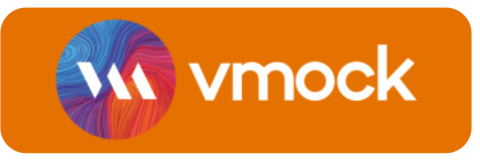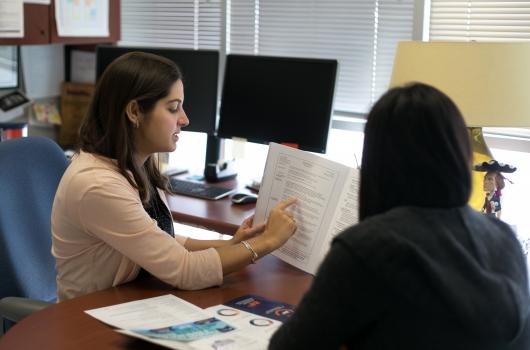
Helpful LinkedIn Handouts
Take the First Step
Probably the biggest area of opportunity new users miss out on with LinkedIn is that they rush to put up a profile, and they don’t take the time to create an effective presence on the site before connecting with others. Take your time in executing these steps to a complete profile:
-
Add a profile photo
-
List all the jobs or positions you’ve held, along with descriptions of your roles
-
Have 5 or more skills on your profile
-
Write a summary about yourself
-
Fill out your industry and ZIP code
-
Add where you went to school
-
Have 50 or more connections – it’s easier than you think to get connected!
Creating your LinkedIn profile will also be easier if you gather a few key resources ahead of time. The most important is to have an updated copy of your resume available, along with your transcripts, a good profile photo, and a draft of a summary
But how can I take a good profile photo?
As a student, your options to have a professional headshot are likely limited. What you can do, however, is focus on taking a photo that represents you at your professional best. Choose professional attire, ensure that your hair and skin look the best they can, select a background that enhances you and doesn’t distract from you, and find a situation that provides for good lighting.
What should I say in my LinkedIn Summary?
Your LinkedIn Summary is a place for you to tell the professional story you want about yourself-a place to “connect-the-dots” of your experience. To get started, consider answering these questions in your profile summary, within the 2000-character limit:
- What am I interested in, professionally?
- What do I aspire to, professionally?
- What are my best skills or experiences that have prepared me for these aspirations?
Look at the summaries of professionals you admire, or some of the examples on LinkedIn University to find a profile summary that matches your personality and lines up with your industry of interest.
Frequently Asked Questions
- How can I use this tool in my job search?
-
Students have used LinkedIn to do any and all of the following: find and contact alumni, develop their Google Search rankings, set up informational interviews, research companies prior to an interview, learn about their chosen industries, expand their network by contributing to professional discussions, and staying current on news in their future industries.
- What is the most effective way to connect on LinkedIn?
-
The first, and easiest, is to search for a person’s name and click the ‘connect’ button. You can also import your email contacts and browse the user directory for potentially interesting contacts.
Pay careful attention when importing your email contacts to ensure that you aren’t sending email invites to everyone in your address book, and always personalize your connection messages. LinkedIn offers form text that states “I’d like to add you to my professional network,” but you should personalize it to reflect some of the following:
- Letting the contact know how they met you or why you’d like to be connected
- How you think this relationship would be mutually beneficial
Anecdotally, LinkedIn users seem to respond more positively to personalized invitations than the pre-populated message.
- What should I avoid doing when using LinkedIn?
-
LinkedIn is a place to create and manage a professional image of yourself, and that should guide all of your interactions on the site. Keep your focus on connecting to people that you know and have something in common with, strive to personalize your interactions with others on the site, and remember that it’s not a place to air grievances about your job search. Focus your energy on being authentic, helpful, and enthusiastic in your interactions.
- How can I ensure my profile is widely visible?
-
Create a public profile link. Making your profile public gives you a short, easily shareable link that you can include on your resume, cover letter, email signature, and business cards. Making your profile public also improves your Google search results for your name, which can be very helpful if you have a common name, or it can assist you in making the right information about you accessible.
- To get started, Go to Profile “Edit your profile”
- Click the edit button beside "Contact Info" on the initial pop-up window, leading you to yet another pop-up window. Your personal profile URL should appear at the top of this new window. After clicking on your URL, you should be taken to a page with your public profile settings.
- On this new page, click "Edit URL” found on the right. Type the last part of your new custom URL in the text box.
- Click Save.
You can then visit the “settings” page and then choose “edit your public profile” to make changes to the content that is shown online. You can show all of the same sections that are available to registered LinkedIn users, or restrict it further.
- I am already on LinkedIn - Now What?
-
Consider using ALL of the available sections
You already know that LinkedIn offers you the ability to edit a summary section, a section covering your work experience, groups and associations, skills, and recommendations. However, there are even more sections you can use to customize your profile. You could consider adding sections on:
- Courses
- Honors and Awards
- Languages
- Organizations
- Projects
- Publications
- Test Scores (certain industries are more interested in this data than others.)
- Community Service
Show samples of your work by uploading them to your profile. LinkedIn allows you to upload written documents, video, and other forms of media to enhance your page
Engage with LinkedIn Groups
Groups are where the promise of “exchanging knowledge” truly comes to life. You may want to start by joining the University of Virginia Alumni, Students, Faculty, and Staff group which is where students, alumni, parents, and recruiters regularly interact. Beyond that, you could search for groups that focus on your related interests, such as: future career fields, networking in a certain geographic location, and based on your college affiliations As you connect to people, take a look at the groups they’re a part of-that’s a great source of future inspiration.
As you search for groups, you can see additional data about each group in the results, such as the number of people in your network that belong to the group, and most importantly, whether or not the group is active. LinkedIn Groups all have a similar structure that includes discussion boards, the ability to post and view jobs, and search the member directory. As a student, the discussion boards are a key source of insight into the issues, concerns, and challenges of a particular industry or professional situation, and it’s a great place to observe for a little while. Within each discussion board, you can follow the discussion and receive additional information when others comment, and you can also like the discussion.
Within each group, we recommend adjusting your update settings to prevent getting overwhelmed. You can do that by choosing “my settings” under the “more” menu in each group.
Building Your Personal Brand
Your professional online brand is key to showcasing your experience and interests to potential employers.
1. Be Authentic.
2. Create a distinctive profile headline.
3. Avoid clichés.
4. Be Visible.
5. Build brand associations.
6. Add to your knowledge.
7. Share in LinkedIn Groups.
8. Be Personal.
9. Be Consistent.
10. Give generously.



